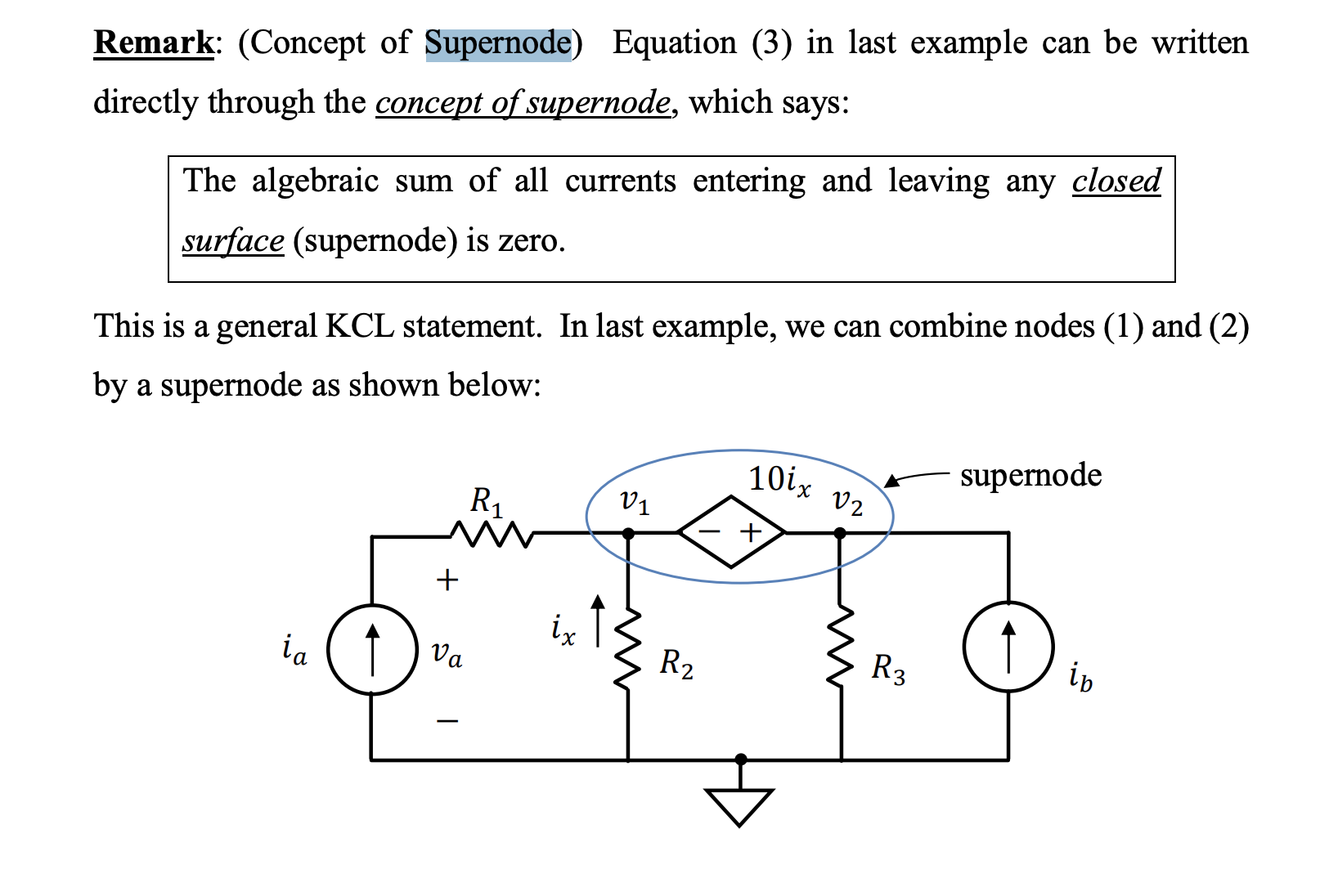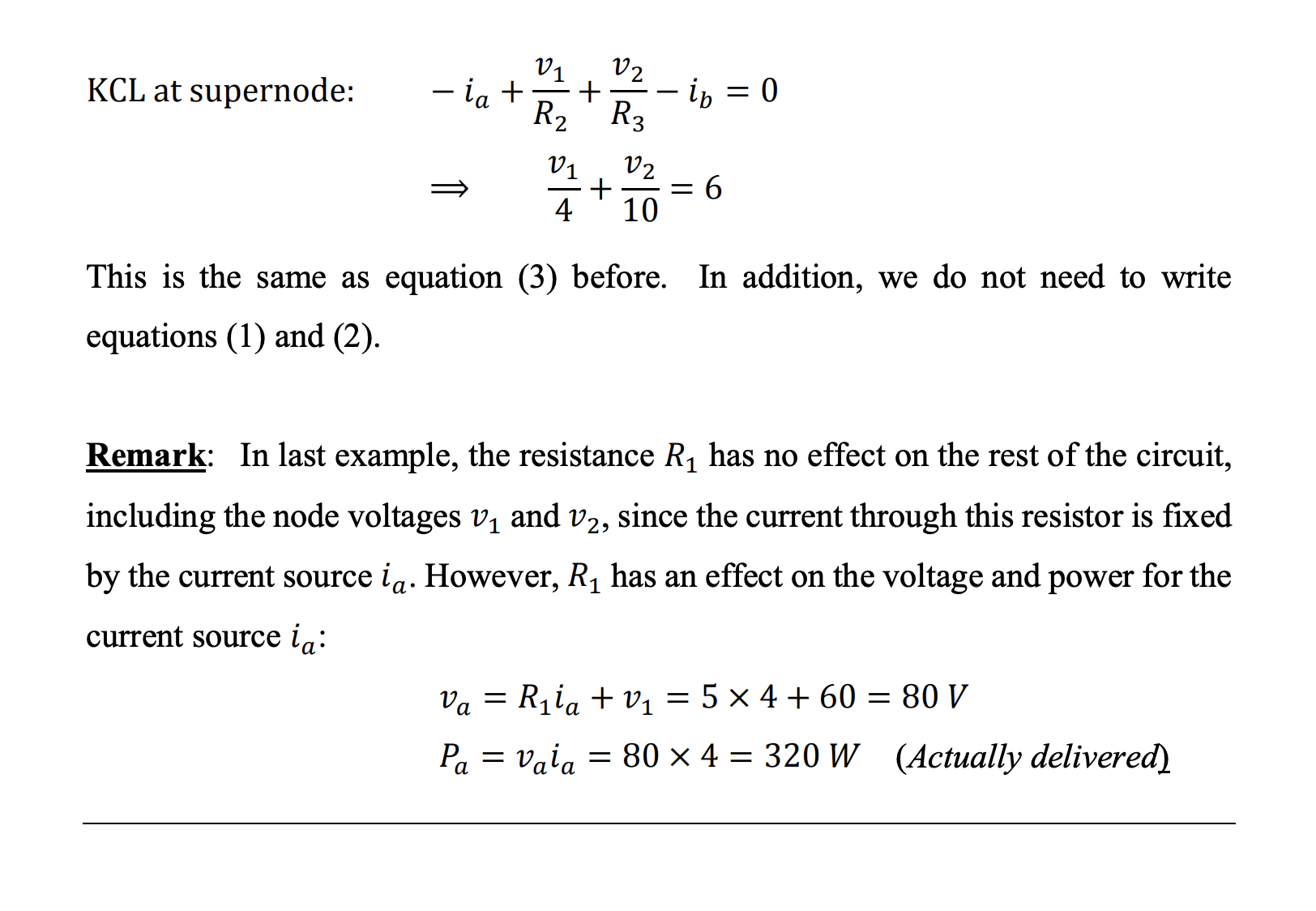Node-Voltage Analysis
Always assume that the current is leaving the node unless otherwise indicated.
Leaving currents will be taken as **positive (+)** while entering currents are taken to be **negative (-)** in KCL equations.Terminology
Essential Node: A node where three or more circuits elements are connected.
Reference Node: One of the essential nodes. Chosen arbitrarily, and assumed to have zero-voltage.
Labeled →
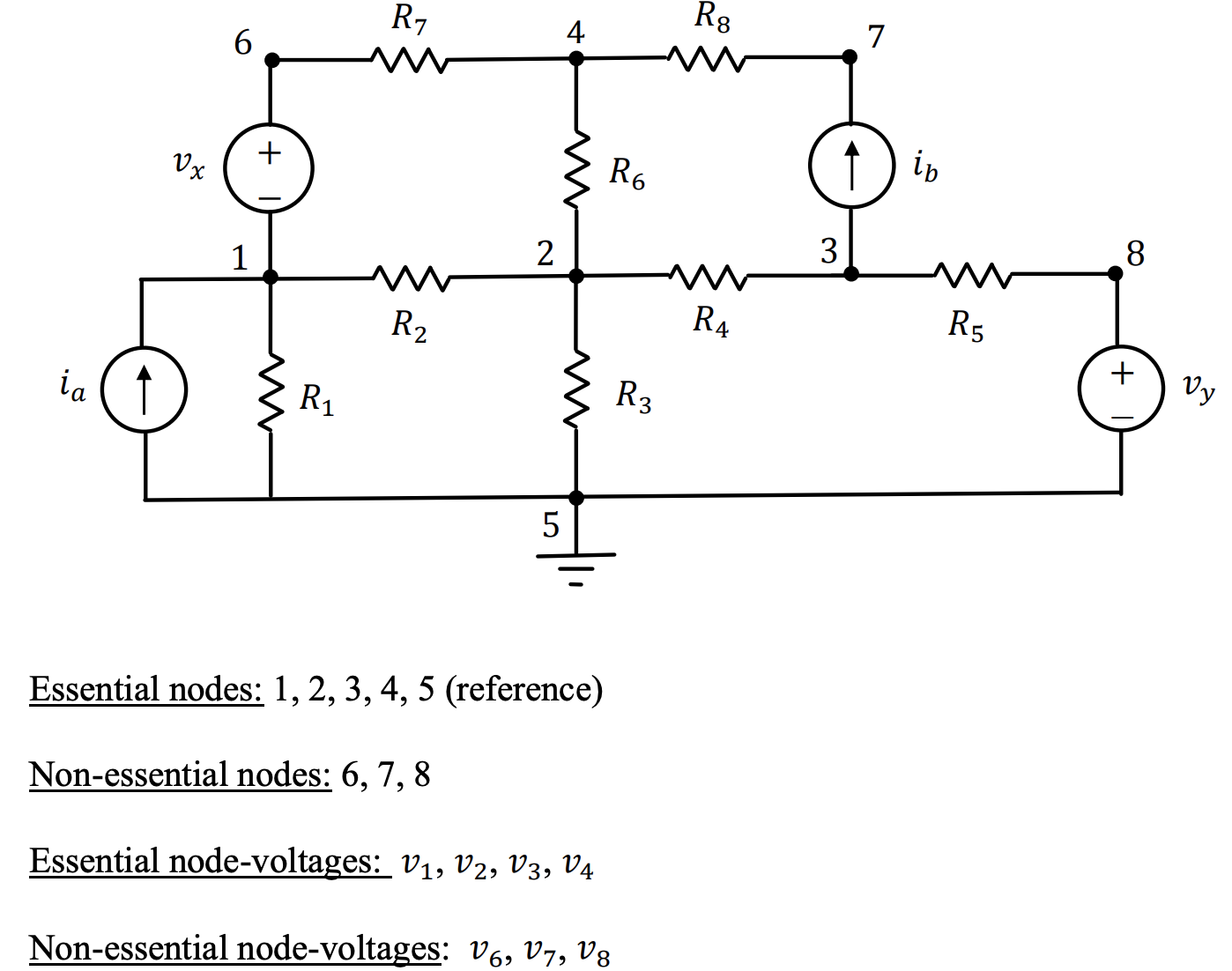
Node-Voltage: The voltage-drop from a non-reference node to the reference node.
Essential Node-Voltage: The voltage-drop from a non-reference essential node to the reference node.
Procedure
- Choose a reference node and label (N-1) node-voltages
- Assign currents to voltages (optional)
- Apply Kirchhoff Laws at each non-reference essential node to get (N-1) equations
- Use Ohm’s Law and Ohm’s Law and Kirchhoff Laws to express the currents in terms of the node-voltages.
- Solve the resulting (N-1) linear independent equations for the (N-1) unknown node-voltages.
Example
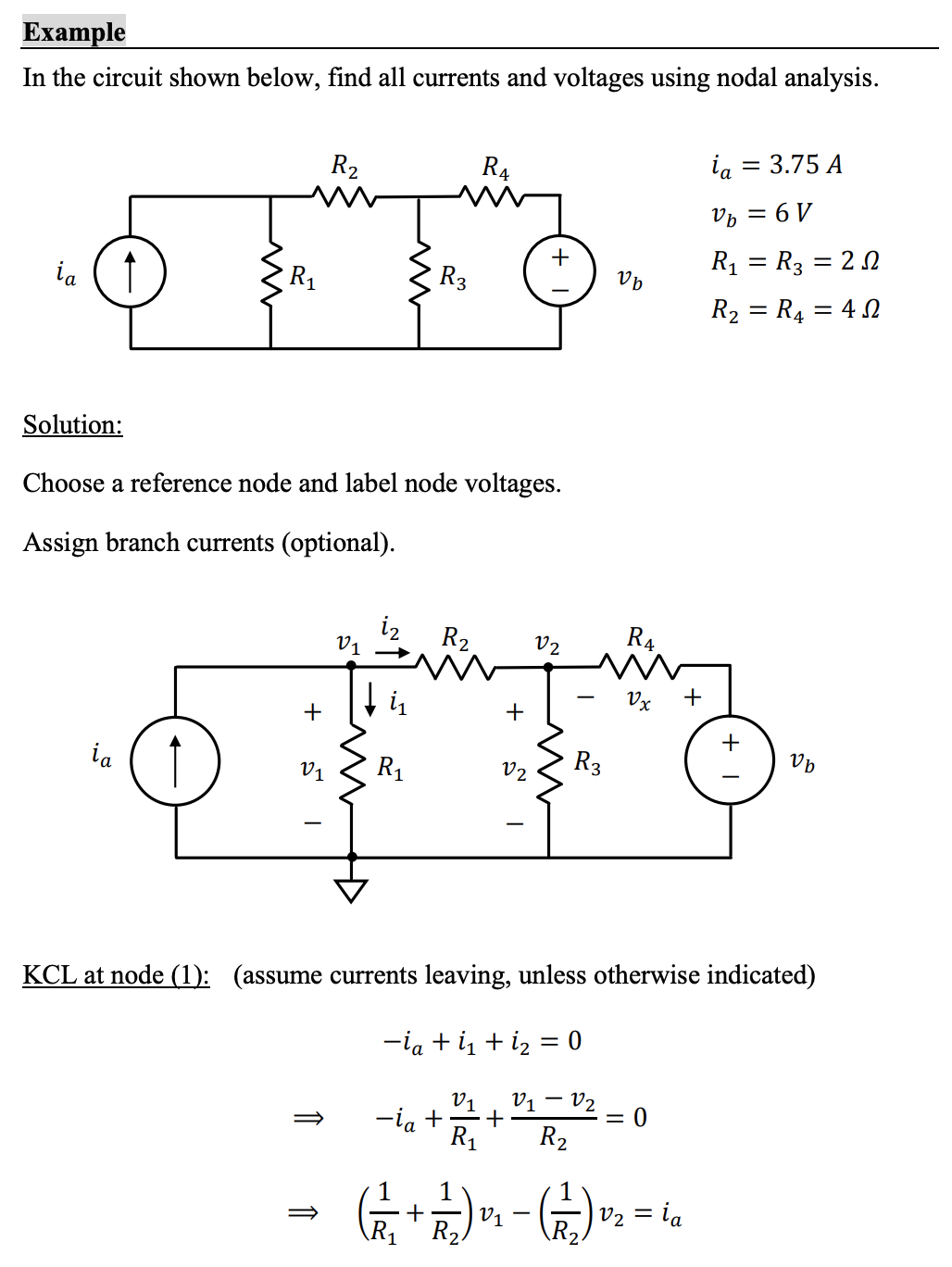
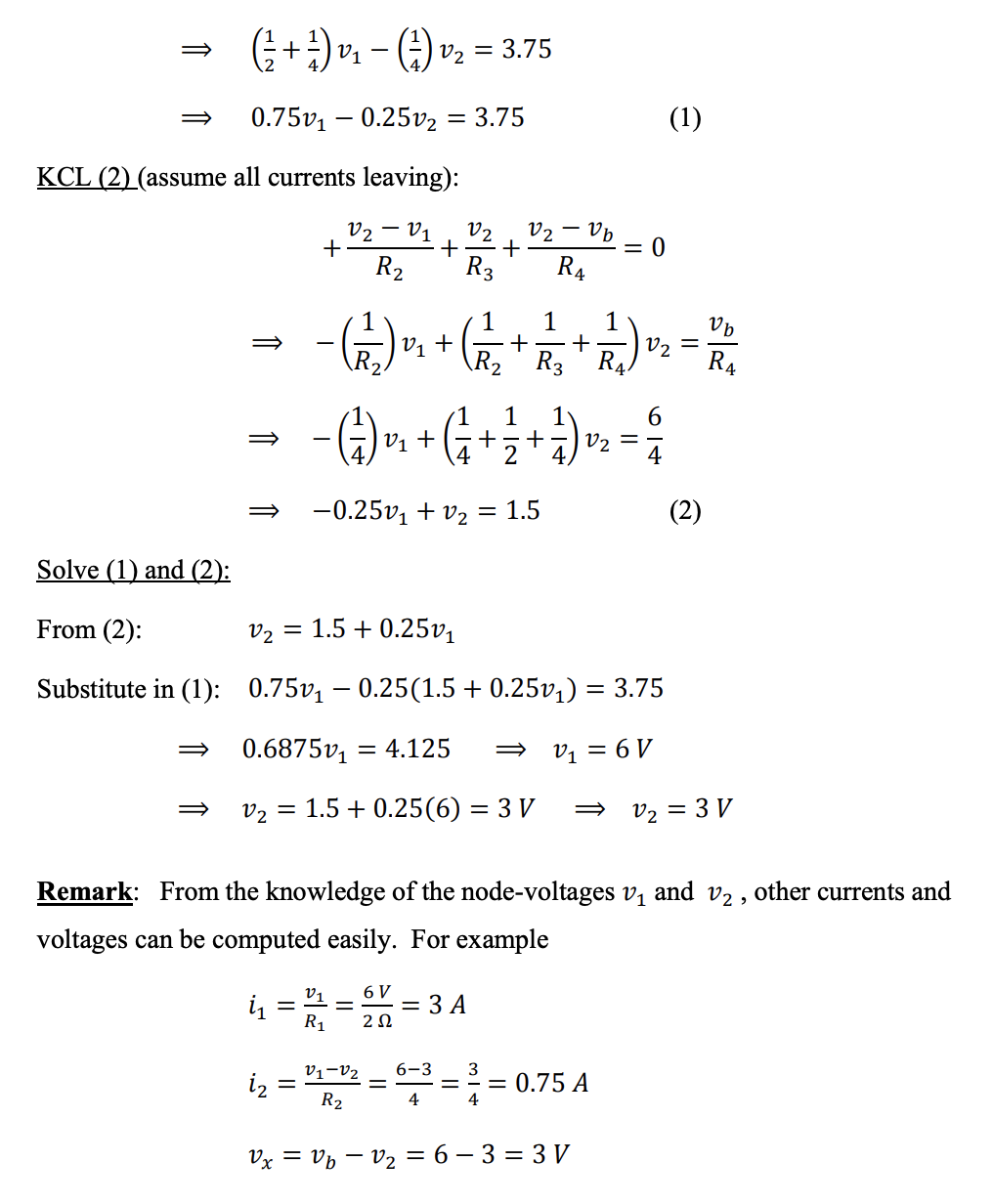
To calculate , always do positive side of voltage minus negative side. Example:
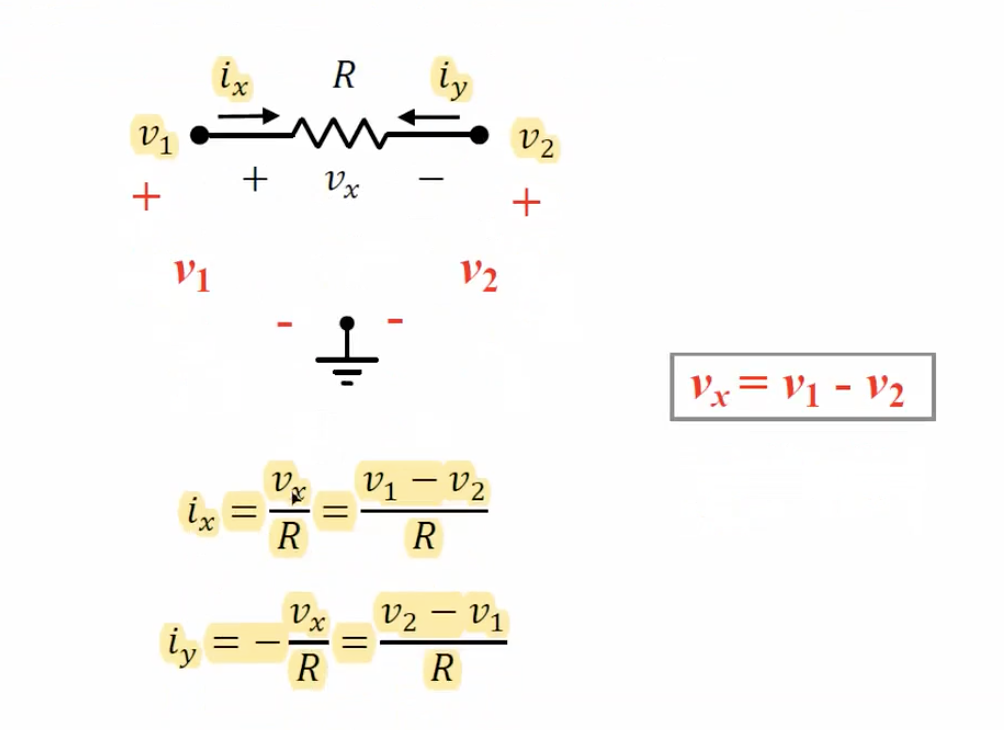
Three-Points Rule
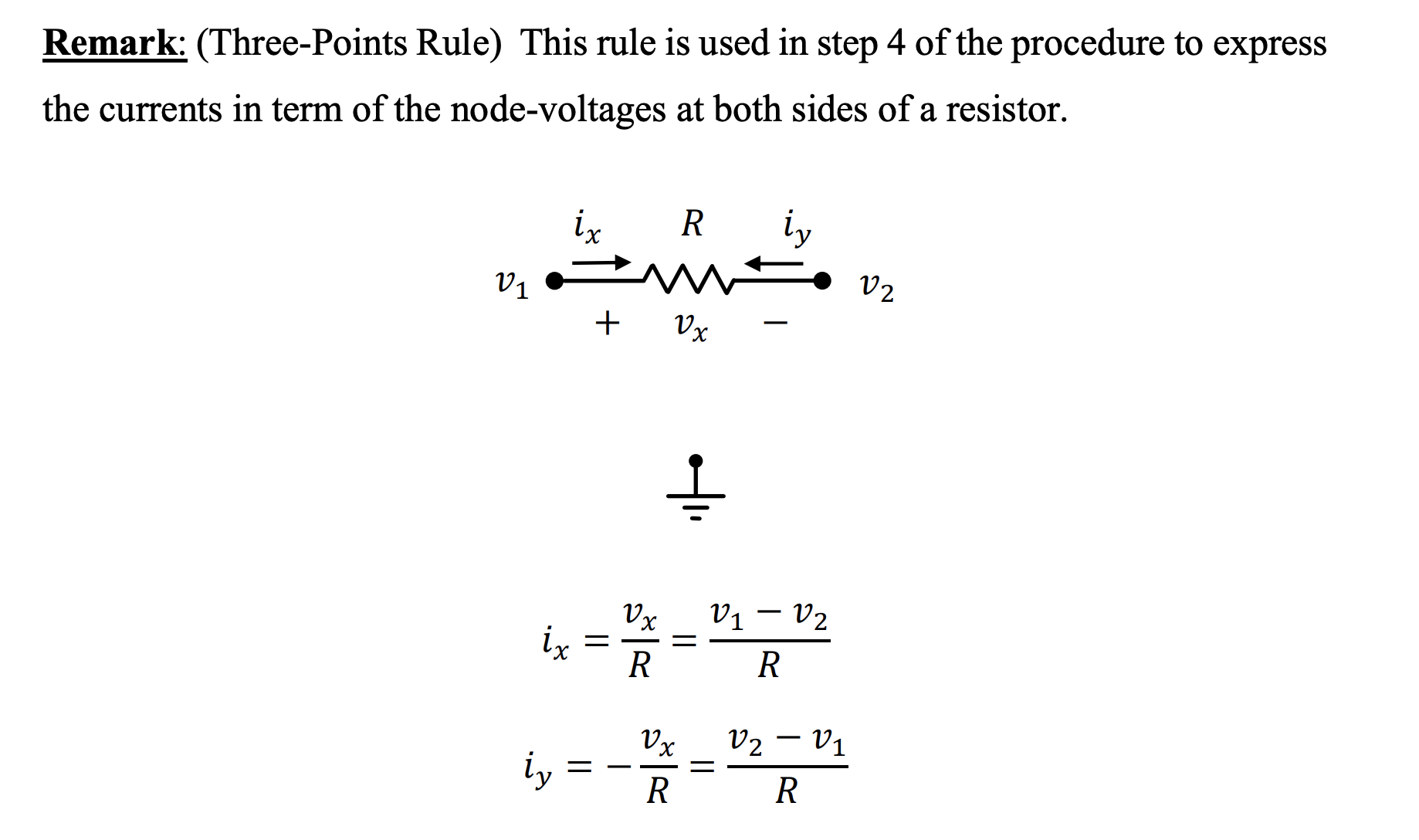
Supernode Analysis
You can simply ignore the voltage source between two nodes.
